Headquarters: 535 Pine Street, Central Falls, RI 02863
Call us: 401-274-0111
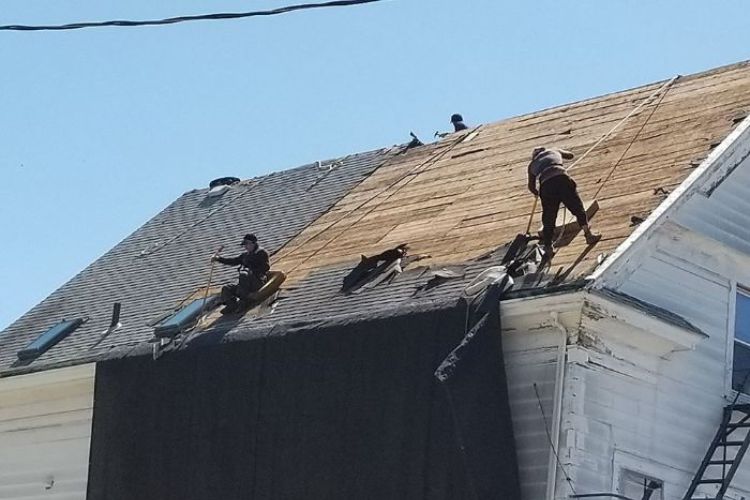
A sagging roof is no laughing matter (unless you have a strange sense of humor). But it is pretty common. If you look up at your roofline and see it dipping in places, you likely have a sagging roof situation on your hands.
What causes a sagging roof? A sagging roof is commonly caused by deterioration of the roof materials due to old age, as well as structural issues like inadequate support, water damage, improper installation, excessive weight, or poor ventilation. These problems lead to loss of structural integrity, causing the roof to dip and droop under its weight.
They say nothing lasts forever, and the same goes for your roof. As your roof system ages, the materials naturally start to deteriorate. The shingles become brittle and cracked. The sheathing and rafters weaken. The nails loosen up. Gradually, the roof loses its structural integrity and starts to sag under its own weight. Sometimes, roof replacement is necessary.
Old roofs aren't as spry as they used to be. They just can't hold themselves up like they could in their prime. If your roof is drooping in its advanced age, it may be time for replacement.
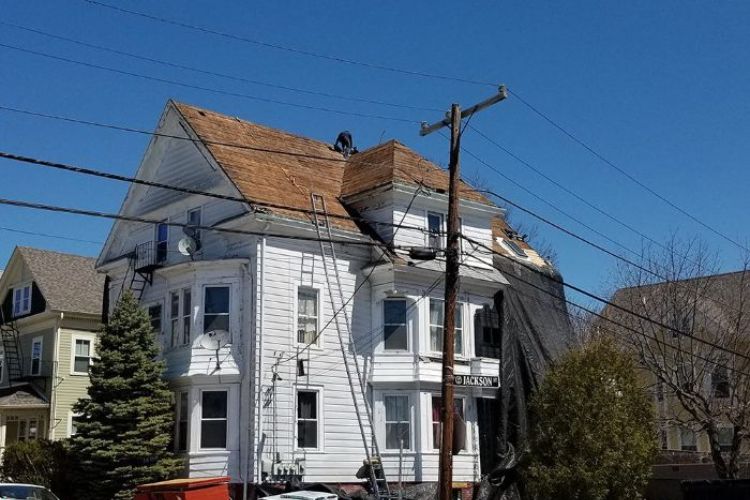
If you live in an area that receives heavy snowfall during the winter, the accumulated weight of snow and ice on your roof can cause it to sag over time. A fresh blanket of fluffy snow may look pretty and harmless. But as it compacts and turns to ice, it becomes dense and extremely heavy. This concentrated weight exerts a tremendous downward pressure on your roof.
A roof that is already worn or structurally weak will have trouble shouldering this seasonal burden. The decking compresses, and the rafters bow, leaving you with a sagging roofline come springtime.
Upgrading to a high-quality roofing material better equipped to handle snow loads can help avoid this issue.
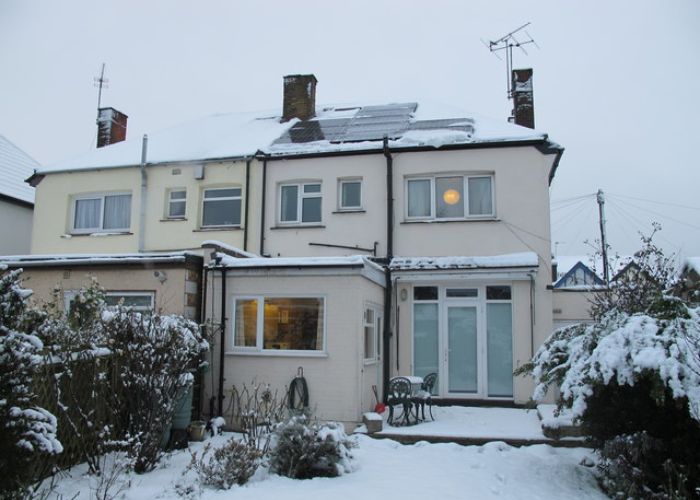
Your roof needs a solid framework to keep its shape. But over time, as construction errors or flaws become apparent, that critical support system can fail. Issues like inadequate rafter sizing, spaced rafters, or broken roof trusses can rob your roof of the internal strength it needs to maintain that crisp horizontal line.
Inadequate attic ventilation also accelerates the breakdown of roof sheathing and rafters by trapping excess heat and moisture. Prevent sagging by ensuring your roof has robust underlying support and proper airflow right from the start.
Water is the roof’s natural enemy. When water repeatedly seeps into your roof from rain or snowmelt, it can cause mold, mildew, and eventually rot within the roof deck and rafters. This moisture-related decomposition eats away at the wood, weakening critical load-bearing components.
Plus, a saturated roof becomes much heavier, placing additional strain on the supporting structure. Water also expands as it freezes, exerting outward pressure. This one-two punch of excess weight and expanding ice crystals can quickly lead to ugly roof sagging.
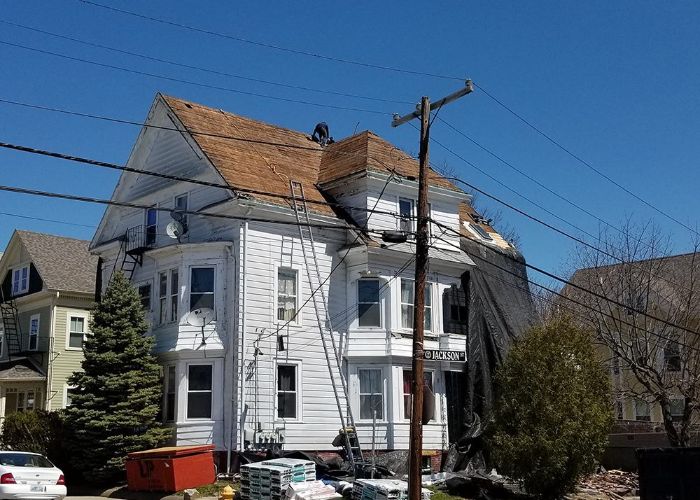
Even brand-new roofs can start sagging, often due to installation errors. Using the wrong fasteners, nailing in a shoddy pattern, or failing to join roof segments adequately are common mistakes that undermine the structural integrity of the roof right off the bat.
Using green or warped lumber is another concern, as is layering the roofing material improperly. Starting on the wrong foot with poor workmanship sets the stage for problems like sagging down the road. Thoroughly vet your roofing contractor to avoid these rookie mistakes.
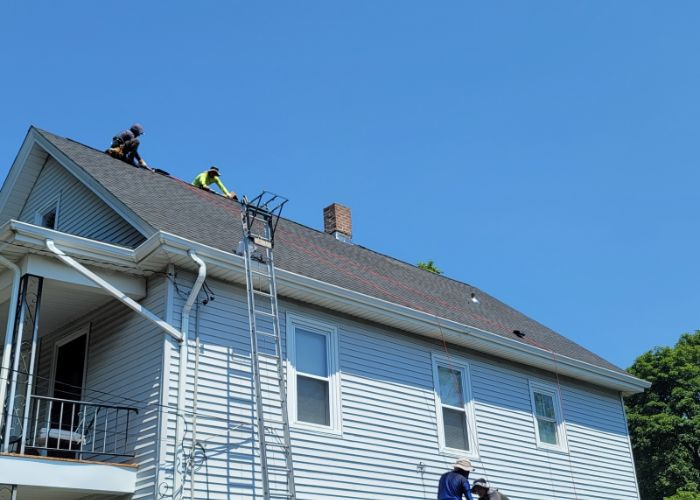
Your roof is quite versatile, but it's not indestructible. Excessively heavy loads can cause it to bend and sag. Using heavy equipment like lifts or cranes on the roof places highly concentrated weight in small areas. Storing excessively heavy equipment or building materials like tiles or stone in the attic can also weigh down the ceiling joists.
Inspect your attic and ask about equipment use before starting any roof project to ensure you don't tax your roof beyond its limits. Distribute weight as evenly as possible, reinforce the structure if needed, and avoid overloading small sections.
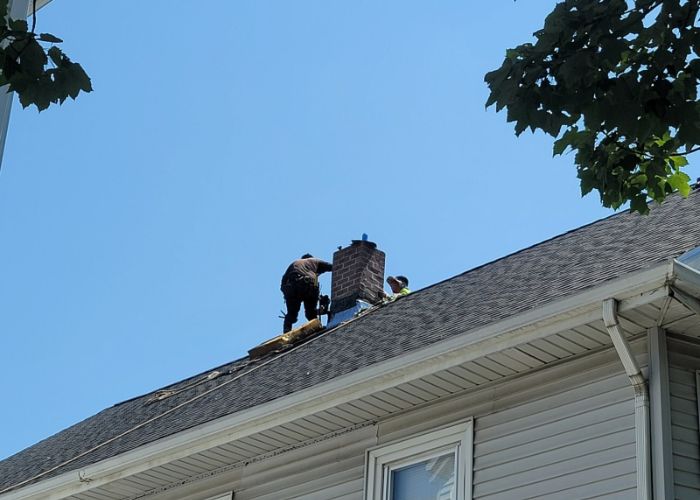
Trapped hot air and moisture in the attic will also contribute to sagging over time. Proper roof ventilation allows air to move freely in and out, keeping the roof decking and framing cooler and drier. Without ample airflow, heat and condensation buildup will accelerate the deterioration of the roof.
Missing, blocked, or insufficient vents starve the roof of the fresh air circulation it needs. Heat and humidity get trapped in the attic, wearing away at the structure and materials. Ensure your roof is adequately vented to allow moisture to escape and prevent premature sagging.
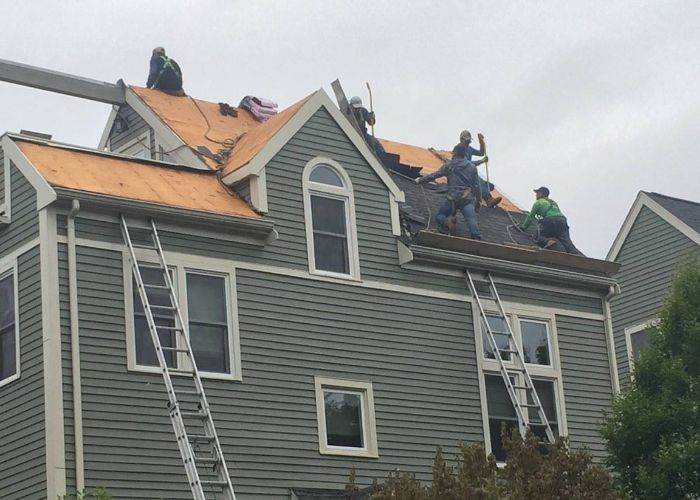
A droopy, sagging roofline is usually indicative of an underlying problem, whether it's old age, structural issues, weather damage, or improper construction. While it may start slowly and subtly, a sagging roof will eventually require repairs to prevent full failure. Catch this issue early and address the root cause to restore your roof to its proper form and function. With the right maintenance and care, you can keep your roof looking perky and prevent it from going south.
About United Better Homes
United Better Homes is your local, trusted contractor for all roofing, siding, and window installation and repairs. With over 20 years of experience, our experts can diagnose issues like sagging roofs and recommend the best solutions while providing quality workmanship you can rely on. Contact the team today at 401-274-0111 for your free inspection and estimate.
Can a sagging roof be fixed?
In many cases, a sagging roof can be repaired if the damage is not too extensive and the underlying cause is properly addressed. However, if the sagging is severe due to old age or structural failure, it may be more cost-effective to replace the roof rather than attempting extensive repairs completely.
How serious is a sagging roof?
A sagging roof is a serious issue that should not be ignored, as it indicates potential structural problems and ongoing damage to the roof system. If left unaddressed, a sagging roof will continue to deteriorate, leading to leaking, mold growth, and eventual roof failure that requires expensive replacement.
What to do when roof is sagging?
If you notice your roof sagging, take action as soon as possible to prevent further damage. Start by having a professional roofer inspect the roof and determine the cause, such as deterioration or structural issues. For minor sagging, repairs like reinforcing rafters or installing additional vents may fix the issue. However, for severe sagging or signs of extensive water damage, a full roof replacement may be required to address the underlying problems causing the sag. Don't delay - tackling a sagging roof now can prevent much larger headaches down the road.
Why does my roof have a dip in it?
There are several potential causes for a dip or sag in your roof. The roof decking or framing may be deteriorating from age, causing a loss of structural support. Insufficient attic ventilation and moisture can damage the roof sheathing. Excess weight from heavy snow, equipment, or materials can also cause dips and sags. Water damage from leaks can rot the roof deck and rafters. Improper installation with inadequate fastening or support may be to blame as well. Dips and sags indicate your roof needs repairs to address the underlying cause, whether it's age, water damage, weight issues, attic moisture, or installation problems. Don't ignore a sagging roofline, as further deterioration and more serious failure could occur.
Can a sagging roof collapse?
A sagging roof is at high risk for eventual collapse if the underlying structural issues are not properly addressed. As the roof decking and rafters deteriorate from age, water damage, or other problems, they become unable to bear the weight load. Sagging progresses to serious deformation and compromised structural integrity. Additional strain from snow, equipment, or moisture buildup can be the last straw that leads to catastrophic failure. Warning signs like severe sagging, cracks, leaks, and visible rot mean collapse could be imminent if repairs are not urgently made. If you notice extreme roof sagging, have it evaluated right away before the damage escalates and causes the roof to cave in fully.
How do you reinforce a sagging roof?
To reinforce a sagging roof, start by identifying and repairing leaks to prevent further water damage. Next, inspect the roof structure and replace any rotten or damaged boards and rafters as needed. Structural supports like sistering rafters, adding collar ties, or installing roof jacks can help shore up sagging areas. Finally, removing excess weight stored in the attic and improving ventilation will also take strain off the roof. These targeted reinforcements and repairs can restore integrity and stop a roof from sagging further.